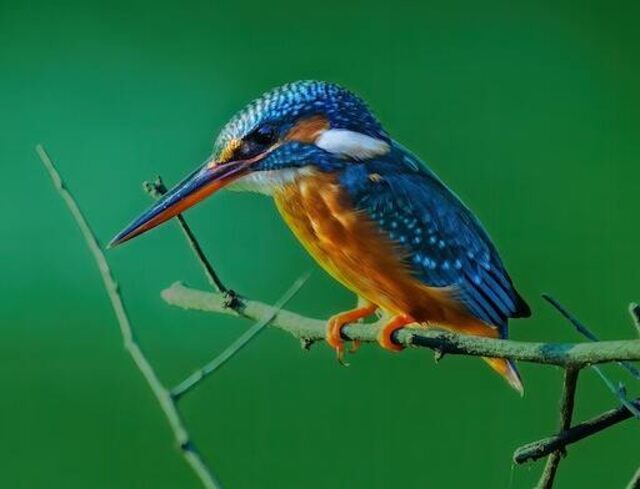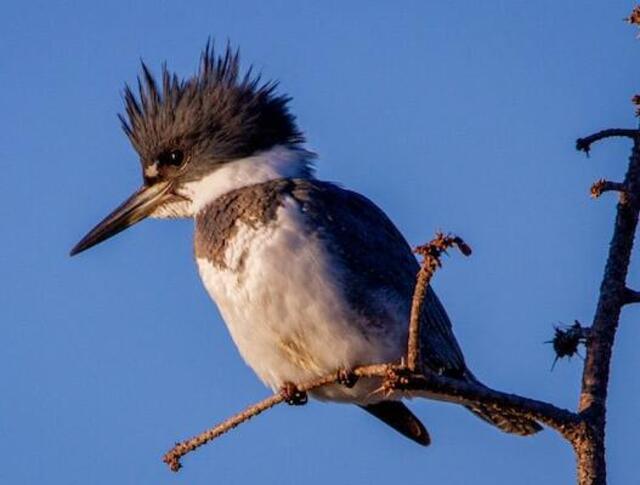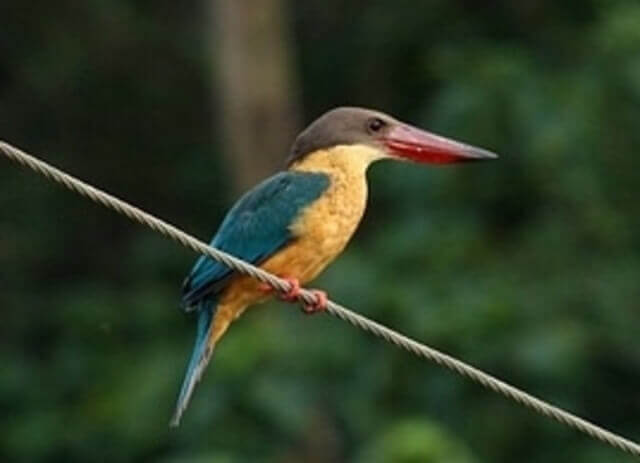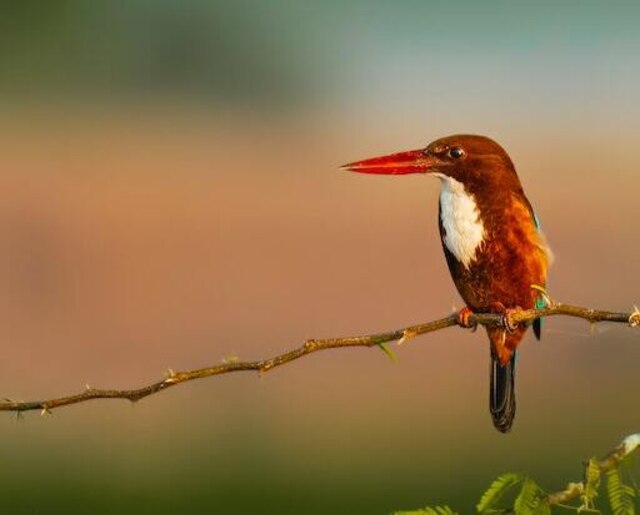Kingfishers are known for their striking beauty and remarkable hunting skills. But how much do we know about their migration patterns? In this article, we will explore the fascinating world of kingfisher bird migration, uncovering the secrets of their seasonal movements and the factors that influence their behavior.
Whether you are a bird lover or simply curious about the natural world, this article will provide valuable insights into the migratory habits of these magnificent creatures.
Table of Contents
- 1 Key Takeaways:
- 2 Do Kingfishers Migrate?
- 3 Understanding Bird Migration
- 4 The Migration Behavior of Kingfishers
- 5 Long-Distance Migration of Kingfishers
- 6 Kingfisher Bird Migration Routes
- 7 Factors Influencing Kingfisher Migration
- 8 The Purpose of Kingfisher Bird Migration
- 9 The Seasonal Migration of Kingfishers
- 10 The Fascination of Kingfisher Bird Migration
- 11 Conclusion
- 12 FAQs: Do Kingfishers Migrate?
- 12.1 Do kingfishers migrate?
- 12.2 What are the migration patterns of kingfishers?
- 12.3 What factors influence kingfisher bird migration?
- 12.4 How long do kingfishers migrate?
- 12.5 What are some notable migration routes taken by kingfishers?
- 12.6 Why do kingfishers migrate?
- 12.7 How do seasonal changes affect kingfisher bird migration?
- 12.8 What makes kingfisher bird migration fascinating?
- 13 Author
Key Takeaways:
- Kingfishers are known for their striking beauty and remarkable hunting skills.
- This article will explore the fascinating world of kingfisher bird migration, uncovering the secrets of their seasonal movements and the factors that influence their behavior.
- Understanding kingfisher bird migration is important for preserving these magnificent creatures and their habitats.

Do Kingfishers Migrate?
Yes, some species of kingfishers do migrate. Kingfishers are found throughout the world, in both tropical and temperate regions. Some species of kingfishers, such as the belted kingfisher, are resident birds and do not migrate.
However, many other species of kingfishers do migrate, either partially or fully, depending on their range and habitat. For example, the common kingfisher, which is found in Europe and Asia, is a partial migrant, with some populations moving south for the winter.
Similarly, the pied kingfisher, which is found in Africa and Asia, is a partial migrant, with some populations moving to warmer regions during the winter months. Other species of kingfishers, such as the green kingfisher and the Amazon kingfisher, are resident birds and do not migrate.
Understanding Bird Migration
Bird migration is a remarkable phenomenon that has captivated scientists and bird enthusiasts alike for centuries. It refers to the seasonal movement of birds from one location to another in search of better living conditions, such as food and breeding grounds.
Kingfishers, like many other bird species, exhibit distinct migration patterns that are shaped by a variety of factors. These patterns usually follow a north-south axis, with birds traveling from their breeding grounds in the north to their wintering grounds in the south.
The migrating habits of kingfishers are influenced by environmental cues such as changes in day length, temperature, humidity, and food availability. For instance, as the days grow shorter and temperatures drop in the fall, many kingfishers begin to migrate southward in search of warmer climates and better foraging opportunities.
In general, kingfisher bird migration patterns are characterized by a high degree of specificity and precision. These birds rely on a range of navigational strategies to guide them, such as the use of celestial cues, magnetic fields, and visual landmarks. They also exhibit impressive endurance and can cover vast distances during their journeys, sometimes traveling thousands of miles without stopping.
Overall, understanding the migrating habits of kingfishers is a fascinating area of research that sheds light on the complex behavior of these birds and the environmental factors that shape their lives. By studying and preserving these patterns, we can gain a greater appreciation for the natural world and the role that birds play in it.
The Migration Behavior of Kingfishers
Kingfishers are known for their stunning physical features and unique hunting abilities. However, many people are unaware of their impressive migration patterns. So, do kingfishers migrate? The answer is yes.
Kingfisher bird migration behavior is influenced by various factors, including breeding, food availability, and weather conditions. They are known to migrate to different regions in search of better breeding grounds and food resources.
During migration, kingfishers typically fly during the daytime, relying on visual cues such as the sun’s position and landmarks to navigate. They also have the ability to use the Earth’s magnetic field and sense polarized light to orient themselves.
The Seasonal Movement of Kingfishers
The migration behavior of kingfishers is seasonal, with movement patterns varying by region. In North America, kingfishers move southward during the fall and winter months and return to their breeding grounds in the spring. In Europe and Asia, kingfishers typically migrate to warmer regions during the winter.
Studies have shown that kingfishers have a remarkable ability to remember their migration routes, returning to the same breeding and wintering grounds year after year. This makes them an important indicator species for monitoring changes in the environment and climate.
The Challenges of Migration
The long flight paths of kingfishers pose various challenges, including adverse weather conditions and potential habitat loss. They also face threats from human activities such as deforestation and pollution, which can impact their breeding and foraging grounds.
Despite these challenges, kingfishers continue to migrate each year, showcasing their incredible resilience and adaptability. Understanding their migration behavior is crucial for conserving their populations and protecting their habitats.

Long-Distance Migration of Kingfishers
Kingfishers are known for their impressive migration habits, which include traveling long distances to reach their desired breeding and foraging grounds. These birds typically migrate over thousands of miles, with some species traveling from one continent to another.
The journey can be challenging for kingfishers. They must navigate through various weather conditions, cross over large bodies of water, and avoid predators along the way. Despite these obstacles, they remain committed to their migration patterns, using their innate abilities to find their way.
Kingfishers also face threats from human activities such as habitat destruction and pollution. These factors can disrupt their migration patterns and endanger their survival.
It should be noted that not all kingfisher bird species migrate long distances. Some are considered resident birds, meaning they remain in a particular area year-round. However, many kingfisher species do display long-distance migration behavior, and their journeys are a remarkable feat of nature.
Kingfisher Bird Migration Routes
Kingfishers are known for their long-distance migrations, covering impressive distances in search of better foraging opportunities and suitable breeding grounds. These migratory journeys are highly organized, with the birds following specific routes and making stopovers along the way.
The migration routes of kingfishers vary from region to region, depending on factors such as geographical barriers, prevailing wind patterns, and the availability of food and water sources. In the Northern Hemisphere, kingfishers typically migrate southward in the late summer and early fall, and northward in the spring.
| Route | Starting Point | Destination | Distance Traveled |
|---|---|---|---|
| East Asian-Australasian Flyway | Eastern Russia | Australia and New Zealand | over 9,000 kilometers |
| African-Eurasian Flyway | Europe, Asia, and Africa | Sub-Saharan Africa, the Middle East, and Southern Asia | up to 12,000 kilometers |
| American Flyway | Alaska and Canada | Central and South America | up to 5,000 kilometers |
The East Asian-Australasian Flyway is one of the longest migration routes taken by kingfishers, covering over 9,000 kilometers from Eastern Russia to Australia and New Zealand. The African-Eurasian Flyway is another major route, spanning up to 12,000 kilometers and taking the birds from Europe, Asia, and Africa to Sub-Saharan Africa, the Middle East, and Southern Asia. In the Americas, kingfishers migrate along the American Flyway, covering up to 5,000 kilometers from Alaska and Canada to Central and South America.
Kingfishers make stopovers along their migration routes, resting and refueling at specific locations. These stopovers are crucial to the birds’ survival, allowing them to rest and replenish their energy reserves before continuing their journey.
In conclusion, understanding the migration routes of kingfishers is essential to their conservation, as it helps identify and protect important stopover locations and migration corridors. By preserving these routes, we can ensure the continued survival of these remarkable birds for generations to come.
Factors Influencing Kingfisher Migration
Kingfisher bird migration is influenced by a variety of factors, such as food availability, weather conditions, and breeding cycles. These factors play a crucial role in determining the timing and extent of their seasonal movements.
Food Availability: One of the primary factors that influence kingfisher bird migration is food availability. Kingfishers are carnivorous and require a steady supply of small fish and other aquatic prey to sustain themselves. As a result, their migration patterns often follow the movements of these prey species.
Weather Conditions: Weather conditions also play a significant role in kingfisher bird migration. Changes in temperature, precipitation, and wind patterns can impact the availability of food and the conditions for flying, prompting birds to alter their migration routes or timing. For example, some species of kingfishers may delay their migration if they encounter strong headwinds or adverse weather conditions along their route.
Breeding Cycles: Breeding cycles also affect kingfisher bird migration patterns. Many species of kingfishers breed during the warmer months, and thus, they may migrate to regions with suitable breeding conditions during the spring and summer months. Some kingfishers, such as the Belted Kingfisher, are also known to migrate to avoid competition for nesting sites.
Overall, the factors influencing kingfisher bird migration are complex and interconnected. By understanding these factors, researchers can gain insights into the migratory behavior of kingfishers and develop strategies for conserving their habitats and populations.

The Purpose of Kingfisher Bird Migration
Kingfisher bird migration is a fascinating phenomenon that has puzzled researchers for decades. While there is still much to be understood about the specifics of their migratory behavior, we do know that there are a number of factors that influence their annual journey.
One of the primary reasons why kingfishers migrate is to find suitable breeding grounds. As these birds rely on aquatic habitats for their survival, they need to choose locations that offer an abundance of prey and a favorable environment for nesting. In many cases, this means traveling long distances in search of these ideal conditions.
In addition to breeding, kingfishers also migrate to find better foraging opportunities. As their diet consists mainly of fish, they need to be near bodies of water that offer a plentiful supply of their preferred prey. This can be challenging during the winter months, when water sources may freeze over or fish populations may migrate to warmer waters.
Another factor that influences kingfisher migration is weather conditions. These birds are highly sensitive to changes in temperature, and will often move to warmer climates during the colder months of the year. They may also adjust their migratory routes depending on wind patterns and other meteorological factors.
Ultimately, the purpose of kingfisher bird migration is to ensure their survival and reproductive success. By traveling long distances to find suitable habitats and food sources, these birds are able to thrive in a range of environments and maintain healthy populations across the globe.
The Seasonal Migration of Kingfishers
Kingfishers are known for their remarkable seasonal migrations, which typically occur twice a year. These migrations are driven by various factors, including food availability, breeding cycles, and weather conditions.
In general, kingfishers are known to breed during the spring and summer months, and then migrate to warmer areas during the fall and winter months. During the migration period, kingfishers travel in large flocks, often covering thousands of miles in search of better foraging opportunities and suitable breeding grounds.
The timing of kingfisher bird migration can vary depending on the species and the location, but generally, they start migrating in August-September and reach their wintering grounds by October-November. In the spring, they return to their breeding grounds, starting as early as February in some places.
The migration routes taken by kingfishers are highly variable and dependent on several factors, such as the location of their breeding grounds, the availability of food sources, and the presence of favorable weather conditions. Some kingfishers take a more direct route to their wintering grounds, while others may make several stops along the way to rest and refuel.
One fascinating aspect of kingfisher bird migration is their navigational abilities. Research suggests that they use a range of cues to guide their migration, including the position of the sun, magnetic fields, and visual landmarks. They are also believed to have a highly developed sense of smell, which may help them locate suitable breeding and foraging areas.
Overall, the seasonal migration of kingfishers is a remarkable feat of endurance and adaptation. By understanding the factors that influence their migration patterns, we can better appreciate and protect these fascinating birds for generations to come.

The Fascination of Kingfisher Bird Migration
Kingfisher bird migration is a phenomenon that never fails to amaze both ornithologists and bird enthusiasts. These small, brightly colored birds travel thousands of miles every year, navigating through unfamiliar territories and overcoming numerous obstacles along the way.
One of the most fascinating aspects of kingfisher bird migration is their navigational abilities. They use a combination of celestial cues, topographical landmarks, and magnetic fields to find their way, even in the absence of visual references. It is still unclear how they are able to detect these various signals and integrate them to form an accurate mental map, but it is believed to involve a range of sensory mechanisms and cognitive processes.
Another intriguing aspect of kingfisher bird migration is the distance they cover. Some species can travel up to 6,000 miles from their breeding grounds to their wintering grounds, and back again. This requires a tremendous amount of energy, and kingfishers must be able to adapt their foraging habits to ensure they have enough food to sustain them throughout their journeys. They also face a range of other challenges, including predators, adverse weather conditions, and habitat loss.
Despite these obstacles, kingfisher bird migration remains a remarkable and awe-inspiring natural spectacle. By understanding the factors that influence their movements and the routes they take, we can gain insight into the ecology and behavior of these fascinating birds, and take steps to protect their habitats and ensure their continued survival.
Conclusion
In conclusion, the migration patterns of kingfishers continue to fascinate scientists and nature enthusiasts alike. Their ability to navigate vast distances using celestial cues and magnetic fields is truly remarkable, and their seasonal movements provide important insights into the ecological dynamics of our planet.
However, as with many migratory bird species, kingfishers face a range of threats to their survival, including habitat loss, pollution, and climate change. It is therefore crucial that we take steps to protect their breeding and foraging grounds, and work to reduce our impact on the natural world.
By understanding and preserving the intricacies of kingfisher bird migration, we can help to ensure that these magnificent creatures continue to grace our skies for generations to come.

FAQs: Do Kingfishers Migrate?
Do kingfishers migrate?
Yes, kingfishers do migrate.
What are the migration patterns of kingfishers?
Kingfishers exhibit various migration patterns depending on their species and geographical location.
What factors influence kingfisher bird migration?
Factors such as food availability, weather conditions, and breeding cycles influence kingfisher bird migration.
How long do kingfishers migrate?
Kingfishers can migrate long distances during their journey.
What are some notable migration routes taken by kingfishers?
Kingfishers have specific migration routes, including stopover locations along their journey.
Why do kingfishers migrate?
Kingfishers migrate in search of suitable breeding grounds and better foraging opportunities.
How do seasonal changes affect kingfisher bird migration?
Kingfisher bird migration is influenced by seasonal changes, and their movements vary throughout the year.
What makes kingfisher bird migration fascinating?
Kingfisher bird migration is fascinating due to their navigational abilities and the incredible distances they cover.


